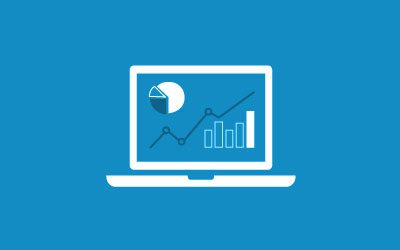Most of us don’t even realize we’re doing it, but when we drive, we glance down at our dashboards every minute or so. We want to make sure we haven’t started speeding. We want to know if the engine’s overheating or if we’re running out of gas. It’s a reflexive behavior for most drivers. Now, with business dashboards, you can have the same beneficial experience while running a company.
What Is a Business Dashboard?
A business dashboard is a computer interface, usually built in a web browser, that graphically displays selected business data for easy consumption. Dashboards are invariably customized, and seldom look alike from one business to another. They may contain displays for sales by day or week, order statuses, sales by top 5 customers and so forth. Like a car’s dashboard, they give managers a quick reference on the health of the business.
How Business Dashboards Work
Most business dashboards, like those available in Acumatica and comparable ERP packages, are assembled using “widgets.” A widget is a single data display element. It might show the sales-by-week data in a line graph. Another widget could show the order statuses in a pie chart, and so forth.
Widgets work through database queries and code that work behind the scenes. While you see a colorful, clean-looking pie chart of order statuses, the widget’s code is asking your ERP database, “What is the status of all open orders?” and then building the pie chart in real time. Like the speedometer on a car dashboard, the order status widget will change dynamically as order statuses get updated across the business.
Why Business Dashboards are Important
Dashboards are helpful in business management for many reasons. For one thing, they enable real time visibility into how your business is running. For example, if sales are slowing down, a good dashboard can let you know right away. You won’t have to wait until the end of the month to know you have a problem. Similarly, if your dashboard shows sales forecasts, you can even see a sales slowdown coming and be able to act before it affects the business.
Another reason dashboards are important relates to their ability to connect strategy with real time action. For instance, your competitive strategy might be based on delivering outstanding service. However, if your dashboard shows you that your service department is chronically late in providing service, that’s a big disconnect that could ruin your competitive advantage. The dashboard highlights the problem for you to see. Of course, a text-based report could also inform you of your service problem. A dynamic real time data graph, however, is a better way to flag the service problem. It gets your attention.
Dashboards are part of a bigger picture that includes data analytics and reporting on business operations and financial results. They make it easier to understand data about your business. Data awareness, as presented in dashboard form, helps you make decisions about personnel, investments, vendors and more.
Making dashboards work requires having the right underlying ERP solution in place and then focusing on reporting based on business data. Most ERP solutions have some basic data analytics and dashboarding features available out of the book, but in most cases, it pays to work with an experienced advisor in implementation of meaningful dashboards.
Innovative Cloud Solutions can help with analytics and dashboards. To learn more, visit https://ics-cloudsolutions.com/acumatica-cloud-erp/


